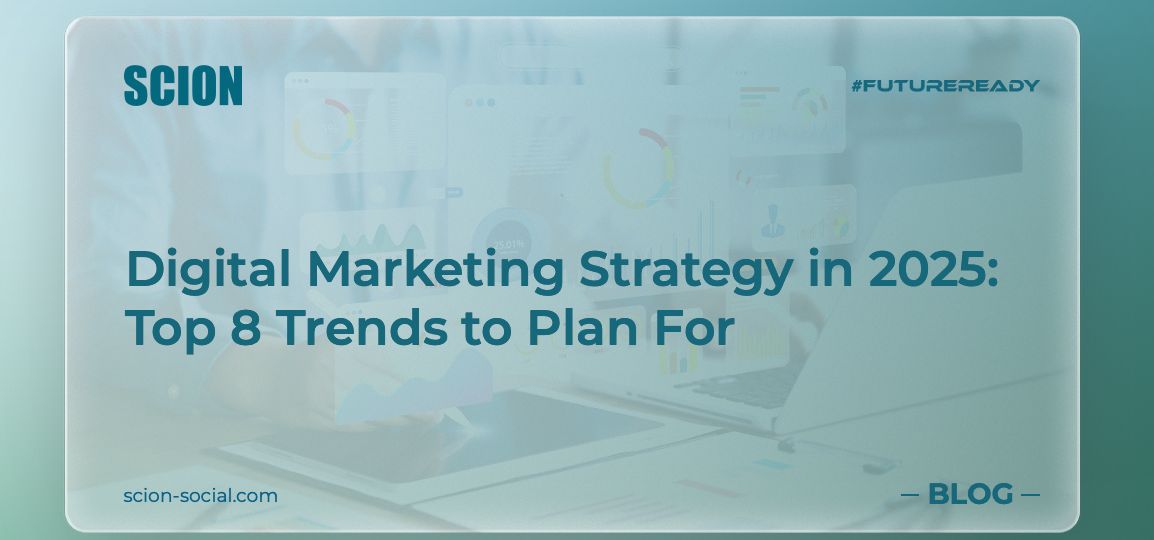
2025 is here, and let me tell you, it really feels like it’s going to be a year of disruption and possibilities! We all know that AI is no longer just the hot topic of conversation- it’s shaping up to impact the business world in ways we never imagined.
Think about it: everything is moving so fast, especially in the digital world. So, if you want to keep up, you can’t observe and copy when you see something working. You need to spot patterns, fine-tune your approach, and welcome innovative ideas to maintain a competitive edge.
Let’s explore some key trends and shifts in 2025 that could help position you as a leader in this fast-paced digital world where being #FutureReady is the name of the game!
AI’s Impact on the Digital Marketing Landscape
Let’s start by addressing the elephant in the room— How is AI really going to shape Digital?
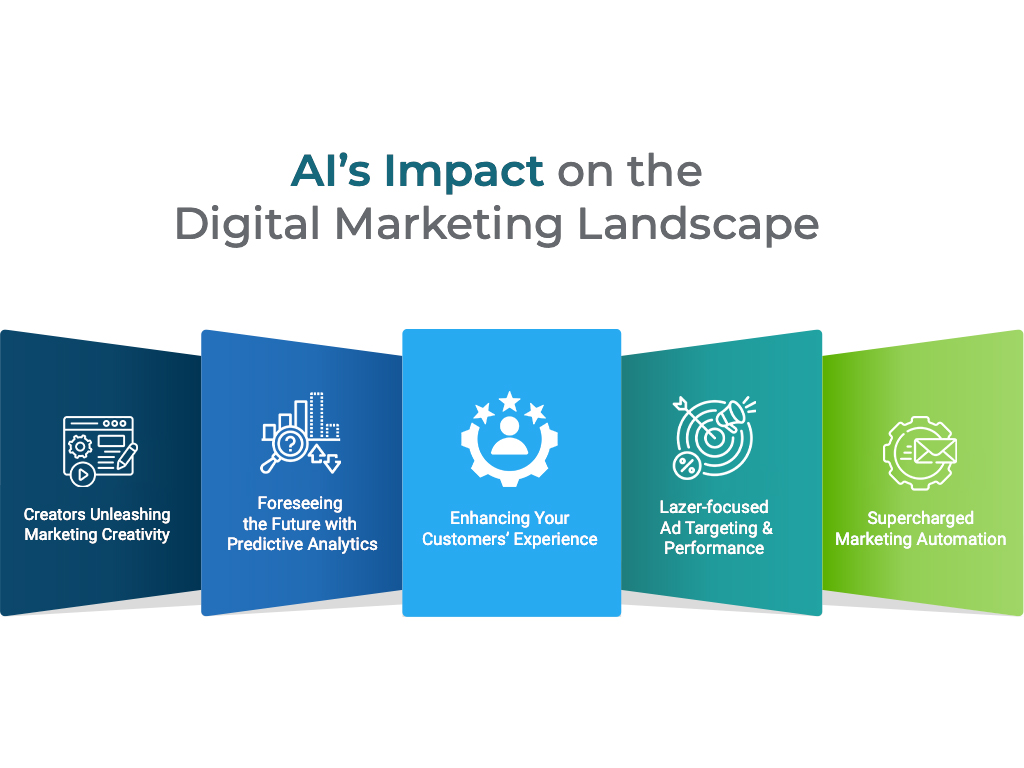
1. Creators Unleashing Marketing Creativity
Let’s cut to the chase. AI is in no way about to replace humans with robots. But if you use it right, it’ll be like having a team of personal assistants working for you 24/7.
We’re spent a lot of time testing and applying tools like copy.ai- which can dramatically increase the speed, accuracy and volume of the content you create! AI handles the heavy lifting – ideating, writing, proof-reading and even refining drafts. This frees us marketers to do what we do best: strategize, innovate, and unleash our creative genius.
Here are some of the benefits we’ve found using tools like copy.ai in our content creation process:
- Consistency: Copy.ai can ensure your content maintains a consistent brand voice and style across all platforms.
- Research: You can quickly research and compile information to support your content.
- Scalability: It can produce a lot more content at scale, allowing you to reach a wider audience.
2. Foreseeing the Future with Predictive Analytics
AI can analyse data and patterns at immense speed given it’s computing power, to make educated predictions on customer behavior, spotting trends before they even happen. This means you can tailor your campaign messaging and approach to the right audience at the right time, maximizing your ROI.
How?
- Understanding Customer Behavior: AI digs deep into past purchases, website visits, social media interactions, and more to figure out what makes customers tick. Will they buy again? Are they thinking about leaving? Knowing this lets you be proactive. That way, you can personalize offers and messages, making them way more relevant and boosting the chances of a conversion. Imagine offering a discount on a product someone’s been eyeing – that’s the power of predictive analytics!
- Trendspotting: AI can spot emerging trends before they hit the mainstream. This will allow you to jump on new opportunities early, developing products or campaigns that resonate with the evolving market. Think about how brands anticipated the rise of plant-based diets for example, and capitalized on it.
- Optimizing Campaign Timing: AI can pinpoint the perfect times to connect with your audience. You can schedule your campaigns for maximum impact, ensuring your message lands at the right moment.
3. Enhancing Your Customer Experience (CX)
Remember those frustrating hold times on customer service calls? They will slowly become of a thing of the past, though not overnight. AI-powered chatbots are available 24/7, instantly answering questions and resolving issues. If done right. this not only improves customer satisfaction but also frees up your human agents to handle more complex requests and build relationships with your customers.

4. Lazer-focused Ad Targeting and Performance
So many companies waste money on ads that the wrong people, or no one at all, see. AI optimizes ad targeting using 1000s of signals, rather than the few we can enter into a interest-based manual audience, ensuring your campaigns reach the exact people who are interest, and most likely to convert.
How does this work?
- AI analyzes data to identify your ideal customer profiles with laser precision, so your ads reach the people most likely to be interested in your offerings, maximizing your ROI. No more wasted ad spends!
- It can adjust your campaigns on the fly based on performance data to keep your ads optimized for maximum impact, driving conversions and sales.
- AI gives you detailed insights into how your campaigns are doing. So, you see what’s working and what’s not, so you can make smart, data-driven decisions to improve your strategies.
5. Supercharged Marketing Automation
An all-time favorite— AI automation. AI automates the tedious tasks, like scheduling social media posts, sending email campaigns, and segmenting your audience. This means marketers can spend less time on repetitive tasks and more time on the things that matter – like brainstorming creative campaigns and building meaningful relationships with customers.
AI’s role has evolved significantly. Where basic automation previously only handled simple tasks, it now powers more sophisticated functionalities. Think automated tagging and lead qualification, dynamic content personalization based on real-time data, and predictive analytics to anticipate customer behavior. This also extends to intelligent routing of inquiries to the most appropriate team member, and even sentiment analysis to gauge customer reactions and tailor communication accordingly.
Tools like HubSpot and Sprout Social are leading the charge in this area.
HubSpot is leveraging AI to enhance lead scoring, content optimization, and other automation features, while Sprout Social is using it for social listening and even chatbot creation. Beyond these platforms, AI-powered solutions are emerging that allow for truly omnichannel messaging. Imagine a customer abandoning their cart on your website. AI triggers a personalized email with a special discount, and if they don’t respond, it can automatically send a follow-up message via SMS or even a push notification through your mobile app. This cross-channel orchestration, driven by AI, ensures consistent and relevant communication at every touchpoint.
AI automates, so you can:
- Focus on the fun stuff like brainstorming creative campaigns and building real relationships with customers.
- Boost engagement and click-through rates, making your email marketing way more effective.
- Achieve more with less.
But here’s the catch: AI is a tool, not a magic wand. You still need human expertise to guide it, analyze the results, and ensure everything aligns with your brand’s values and goals.
In a nutshell, AI is about making marketers more efficient, more effective, and more human. It’s about empowering us to do what we do best—connect with people, build relationships, and drive meaningful results.
As for the trends we promised to talk about, here are the top 8 to look out for in 2025:
1. Smarter Content Funnels to Boost ROI
Have you ever thought about how every single interaction your audience has with your brand either guides them toward, or away from your goal at the end of their journey? With a clear funnel-based approach, you can create a roadmap that reveals every touchpoint your audience engages with—from the moment they first hear about you to the moment they hit “checkout.”
- Top of the Funnel: Imagine this: an e-commerce brand running eye-catching social media ads that draw in potential customers.
- Middle of the Funnel: These potential customers then browse through the offerings and might even engage with testimonials from satisfied customers, nurturing their interest.
- Bottom of the Funnel: However, when it comes time to check out, many abandon their carts. Why? It turns out unexpected shipping fees are turning them away at the last minute.
Analyse this customer journey and you can discover this pain point and implement strategies like clear CTAs that emphasize free shipping, ultimately closing more deals.
This funnel-based approach, combined with audience targeting that converts, allows you to:
- Leverage valuable data from website visitors, email lists, and social media engagers.
- Expand your reach by utilizing lookalike audiences who share similar characteristics.
- Target your efforts based on audience intent, interests, and behaviors for more effective campaigns.
Ultimately, a well-structured content funnel that leverages intent-driven campaigns is your best ally.
- If you’re able to understand your audience’s pain points, you can create highly relevant content.
- Matching your messaging to their specific intent ensures your communication resonates deeply.
- Personalizing your content with dynamic elements further enhances the customer experience.
This data-driven approach empowers you to understand your audience on a deeper level, paving the way for smarter decisions and greater success.
2. AI Search and SEO Evolution
AI is totally changing the search game. Google is still king, but with generative SEO results shaking things up and AI tools like Search GPT exploding, things are getting interesting.
Imagine this: you’re a small B2B company trying to get noticed. You cannot just throw a few keywords on your website and expect to magically appear on page one anymore.
Here’s the deal:
- Data needs to be your new best friend: Tools like SEMrush and ChatGPT are goldmines for finding those super specific, long-tail keywords that your customers are searching for. “Best widget for left-handed accountants in Charlotte” – that is the kind of stuff we’re talking about.
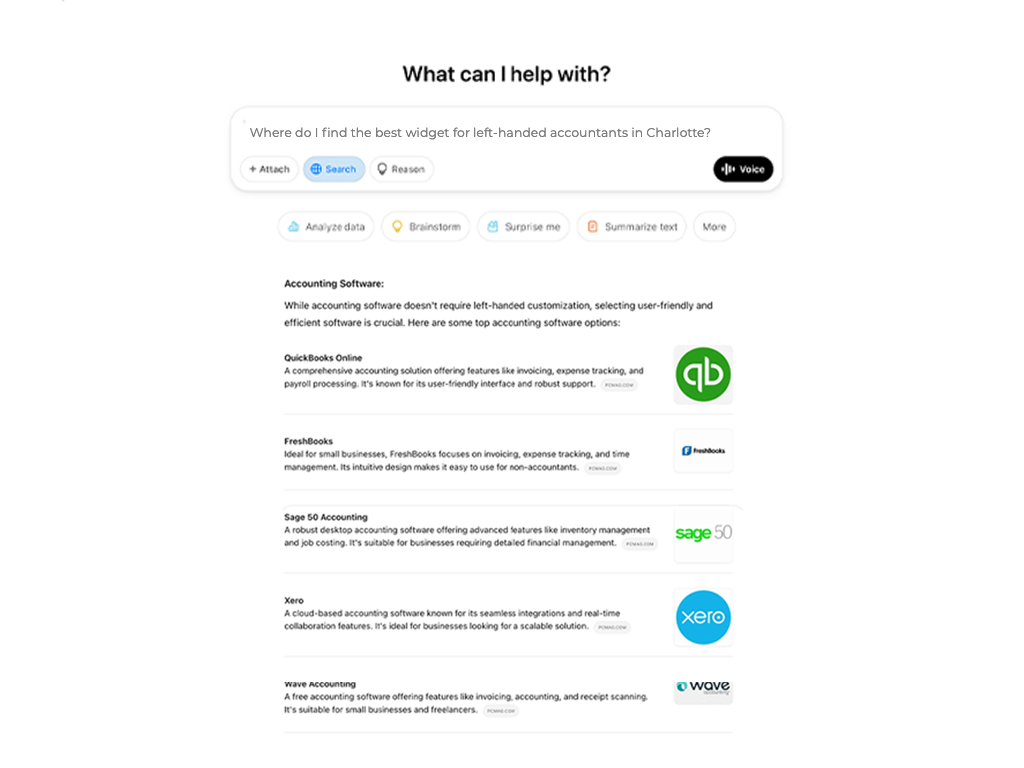
- Content is king, but it needs an AI upgrade: While AI can assist with content creation to some degree, its real strength lies in optimization. It’s less about AI writing entire articles from scratch (though that’s evolving) and more about leveraging AI to enhance existing content for better performance.
Think of it as giving your content a turbo boost. AI can analyze your existing content and suggest improvements for readability, clarity, and SEO. It can identify gaps in your information, recommend relevant keywords and related topics to cover, and even optimize the structure and formatting of your content to make it more appealing to both human readers and search engine algorithms.
Essentially, AI helps you refine and upgrade your content to meet the specific criteria that search engines (which are increasingly AI-powered themselves) use to rank pages. This includes things like natural language processing, semantic analysis, and understanding user intent. So, instead of AI replacing writers, it empowers them to create even better content by providing data-driven insights and recommendations.
SEO is still the foundation, but it’s not a solo act anymore. SEO is like building a house. You need a solid foundation, but you also need a strong roof, good windows, and maybe even a swimming pool in the backyard. Think of it like this:
- Google Ads are your instant gratification. They get you those quick wins – leads coming in right away.
- SEO is your long-term investment that builds brand authority and ensures a steady stream of organic traffic over time.
The winning strategy? A balanced approach. Run those Google Ads campaigns to get those leads flowing while you’re building your SEO muscle with high-quality, AI-powered content. It’s a winning combination that will help you grow sustainably.

3. Immersive Tech: The Mixed Reality Future
The rise of Mixed Reality is revolutionizing how we experience shopping and connect with each other. Immersive marketing and immersive experiences are no longer just futuristic fantasies. We’ll be able to build virtual communities, attend concerts and festivals with friends from around the world, and even host virtual family gatherings, transcending geographical boundaries.
One interesting example of how a popular brand like Nike seamlessly use the Metaverse to capture a wide audience through a virtual world within Roblox where users can play games, customize their avatars with Nike gear, and even visit a virtual Nike store. This allows them to connect with a younger audience and build brand loyalty through interactive experiences.

The rise of Mixed Reality encompasses several key elements:
- Immersive experiences, often powered by Virtual Reality (VR), allow users to fully engage with digital environments.
- Augmented Reality (AR) enhances our real world by overlaying digital information. These immersive technologies are increasingly integrated with digital economies, enabling the buying, selling, and trading of digital assets.
The development of these experiences is sometimes explored through decentralized platforms, potentially offering users greater control over their data and interactions.
Click here for some additional information on the above.
4. Optimized Website(s)
Ever wonder why a beautiful website doesn’t always translate into more sales? The key lies in conversion rate optimization (CRO). It’s not enough for a website to look good; it must also encourage visitors to take action. A smooth user experience and a clear website flow are essential. Think of it like guiding a customer through a store—you want their journey to the checkout to be simple and enjoyable, right? That’s precisely what CRO accomplishes online.

First off, mobile responsiveness and a mobile-driven experience is non-negotiable. Imagine trying to read a novel on your phone – frustrating, right? Your website needs to look and feel amazing on any device, whether it’s a tiny phone screen or a giant desktop monitor.
Secondly, Single Page Applications (SPAs) are the future. These websites load super-fast, like lightning! No more waiting around for pages to load. It’s like surfing the web on a high-speed train. This keeps users engaged and happy, which is the whole point, right?
And finally, let’s talk about AI. Think of it as a secret weapon. AI analyzes how people use your site, figuring out what they like and what they don’t. This helps you tailor the experience, making it more personal and enjoyable for each visitor.
Create a website that not only looks great but also delivers a fantastic user experience.
5. Omnichannel Marketing Strategies
Remember the first point where we talked about how people add items on an e-commerce platform but leave their cart without taking any action?
Well, that’s where omnichannel marketing comes in. It’s all about creating a seamless experience for your customers, no matter where they choose to interact with your brand. Whether they’re browsing your website, engaging with a chatbot, DM you on socials, or calling your customer service line, it should all feel like one cohesive experience.
It’s like having a conversation with a friend. You might start texting, then switch to a video call, and maybe even end up meeting for coffee. The conversation flows naturally, no matter the medium. Omnichannel marketing aims to achieve that same seamless flow for your customers.
But there’s a catch. In today’s world, privacy is paramount. Customers are becoming increasingly wary of how their data is being used. That’s why privacy-compliant strategies and ethical data usage are more important than ever.
No more creepy targeted ads based on your every move! Omnichannel marketing needs to be done right. It’s about using data responsibly to understand your customers better, not to stalk them.

So, how can you do it?
- Personalization: Tailor your messages to each customer based on their individual preferences and past interactions.
- Build customer relationships: Focus on building long-term relationships with your customers, rather than just trying to make a quick sale.
- Always prioritize customer experience: Put yourself in your customers’ shoes and think about what they want and need.
Omnichannel marketing is about creating a truly customer-centric experience where the technology is there but fades into the background. You can build lasting relationships and drive real business growth when you focus on understanding your customers, respecting their privacy, and providing a seamless journey across all channels.
6. Fortified Cybersecurity & Data Privacy
Trust is the foundation of successful digital interactions. Consumers are smart. They know their data is valuable, and they expect companies to handle it responsibly. Those who prioritize data privacy will win loyalty in 2025.
That means being transparent about how you use customer data. Let your customers know how you’re keeping their information safe. Strong protection, two-factor authentication – these things build trust.
Cybersecurity is an ongoing battle. Powerful computers called quantum computers could one day crack our current security measures. That’s why we need to stay ahead of the curve. Zero trust security is increasingly common.
And let’s not forget about education. We all need to learn about cybersecurity best practices. Things like strong password management, recognizing phishing scams, and being mindful of what we share online. It’s about empowering everyone to protect themselves in the digital world.
7. Video Creation in Social Media
You would have noticed that social media video content is absolutely booming right now. But let’s be honest—it can feel overwhelming to create engaging videos that stand out. We get it.
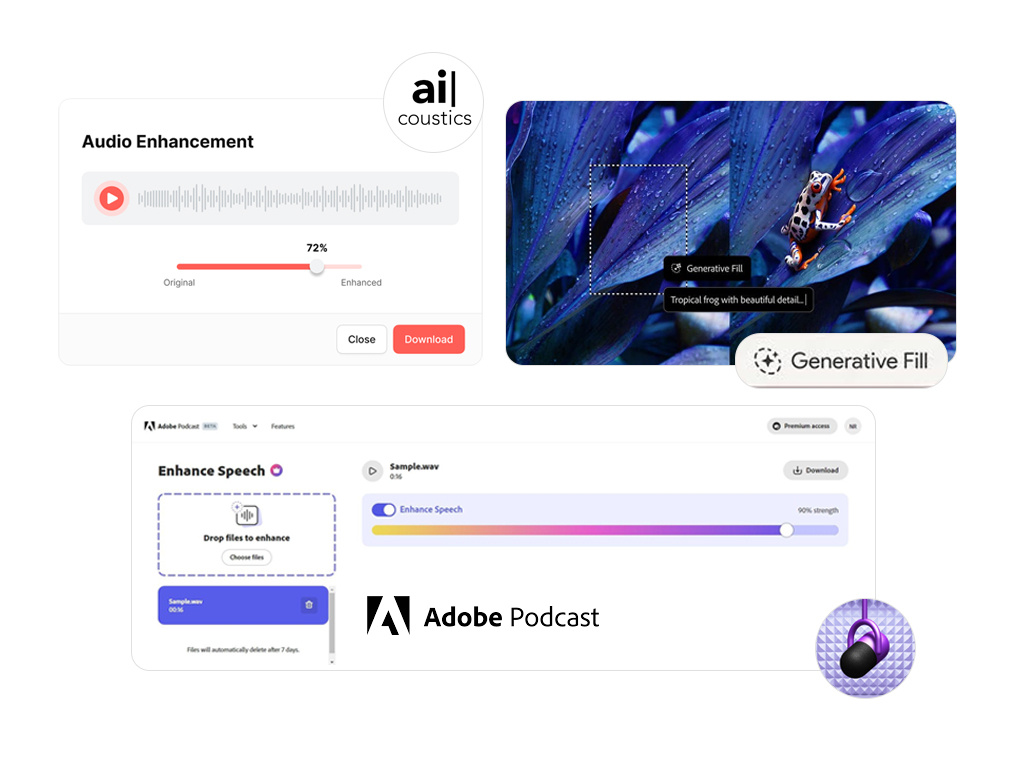
The good news is that you don’t have to tackle this alone. You can bring AI on board as your creative partner. For instance, we’ve been using AiCoustics and Adobe Podcast for voice enhancement, and we use Adobe Generative Fill to creatively fill in blank spaces in videos. The results are nothing short of amazing!
Think of video content like your main course. But to make it truly appetizing, you also need a fantastic platform to serve it on, along with a solid strategy to draw people in. So, let’s break it down a bit:
- Reels are like your appetizers— they’re designed for those quick bursts of attention and can generate views almost instantly.
- YouTube, on the other hand, is your long-term investment. It builds brand authority and ensures a steady flow of organic traffic over time.
So, what’s the winning strategy here? A multi-platform approach is key. Create short, snappy videos for Reels and Shorts to hook your audience right away, while dedicating some time to craft longer, more in-depth videos for YouTube. This not only establishes your expertise but also helps grow your audience sustainably.
And remember, using AI tools can streamline your workflow and maximize your reach, transforming your video content from ordinary to extraordinary. It’s a powerful combination that can take your social media presence to the next level.
8. Marketing Budget
Keeping all the above points in mind, also remember that ad costs are skyrocketing. Diversifying spend and focusing on long-term strategies like SEO is essential for sustainability.
2024 saw a 10.43 % increase in cost-per-click compared to 2023.
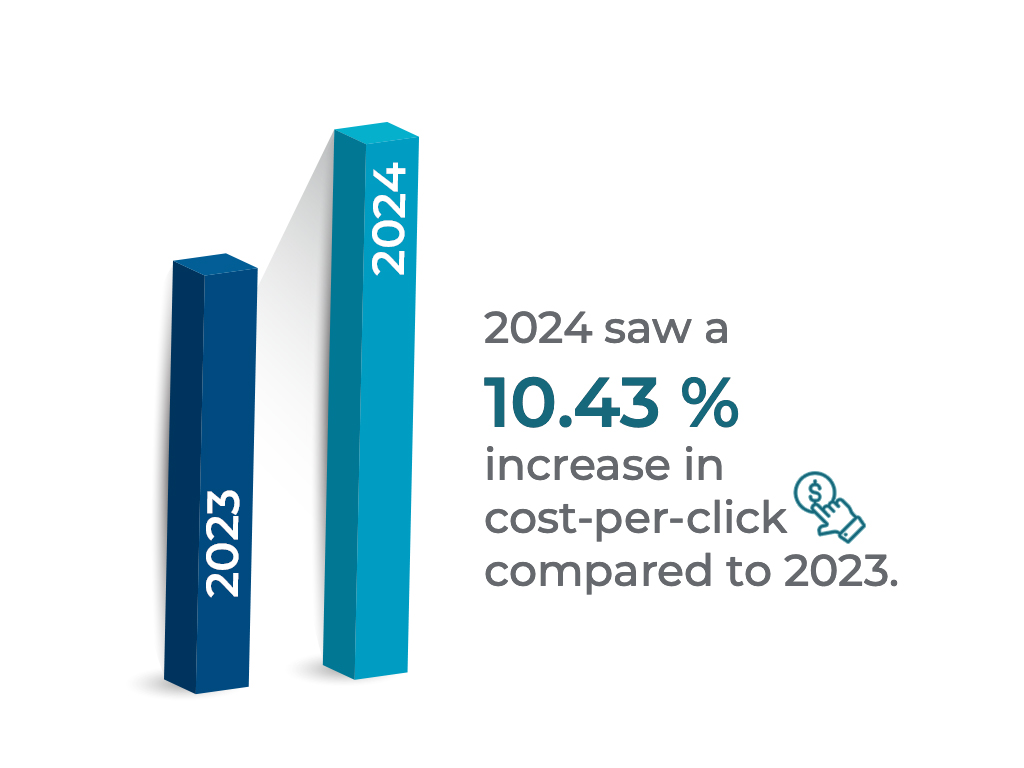
Here are some things to keep in mind:
- Split budgets by goals and segments.
- Test different creatives and placements.
- Scale winners. Cut underperformers.
Bonus: Macro-shifts that will affect your digital:
Democratized Technology
Remember when only big corporations could afford the latest tech? Those days are over! Now, powerful tools are available to everyone. Want to get in on the AI revolution? There are tons of user-friendly AI tools that can help you with everything from creating stunning visuals to writing compelling ad copy.
And let’s not forget about open-source software and data. Sharing knowledge and resources freely? That’s how we level the playing field and empower everyone to innovate.
But here’s the thing, everyone needs to be included in this tech revolution. You need to bridge the digital divide and make sure everyone has the skills and access they need to thrive in this digital age.
Sustainability in Digital Marketing
Sustainability isn’t just a buzzword anymore. It’s about creating a future where we can all live comfortably without harming the planet. This applies to your digital marketing efforts too!
Think about it:
- Eco-friendly hosting: Choose green hosting providers that use renewable energy sources to power their servers.
- Sustainable ad practices: Avoid advertising on websites that promote harmful or misleading information.
- Data privacy: Prioritize user privacy and minimize your environmental impact by reducing data collection and storage.
IKEA, for example focuses largely on circularity, which means they design products for reuse and recycling. They highlight the use of sustainable materials like recycled plastic and sustainably sourced wood in their products, encouraging customers to live more sustainably at home. They also use their website and social media to promote initiatives where customers can return old furniture for recycling or resale.
In today’s environmentally conscious world, consumers are increasingly drawn to brands that share their values. You can not only reduce your environmental impact but also build a stronger connection with eco-conscious customers by integrating sustainability into your digital marketing strategy.
To Conclude
From mastering content funnels to embracing AI-driven personalization and staying ahead of algorithm changes, 2025 is packed with opportunities for digital marketers, businesses, and agencies alike to accelerate their growth. The secret? Be proactive, plan smart, and adapt fast.
These trends aren’t just predictions—they’re your roadmap to future-proof your marketing strategy. The future doesn’t wait. Are you ready to lead the charge? Let’s make 2025 the year your digital presence thrives!
AI is a tool, not a replacement. Use it to automate repetitive tasks, generate content ideas, and analyze data. Then, use your human expertise to refine the output, add your unique brand voice, and ensure the final product resonates with your audience. Think of AI as an assistant that empowers you to be more creative and efficient.”
Consider implementing a live chat feature on your website to capture leads in real-time. Use email marketing to nurture leads with personalized content based on their behavior. Track website analytics to identify areas where users are dropping off and optimize your content accordingly. And don’t forget to analyze customer feedback to identify areas for improvement.
Focus on creating high-quality, informative content that genuinely answers user questions. Utilize AI tools to identify long-tail keywords and perform competitor analysis. Regularly monitor search engine algorithm updates and adjust your SEO strategy accordingly. Experiment with new AI-powered search features and leverage them to gain a competitive advantage.
One of the biggest challenges is ensuring a consistent brand experience across all channels. Maintaining a unified brand voice and delivering consistent messaging can be difficult. Additionally, integrating data from different channels can be complex. Building a robust customer data platform (CDP) can help overcome this challenge.”
Regularly review and update your cybersecurity protocols. Implement multi-factor authentication and strong password policies. Conduct employee training on cybersecurity best practices, including phishing awareness and data security. Stay informed about the latest cybersecurity threats and vulnerabilities. And most importantly, prioritize transparency and build trust with your customers by being open about your data security measures.
